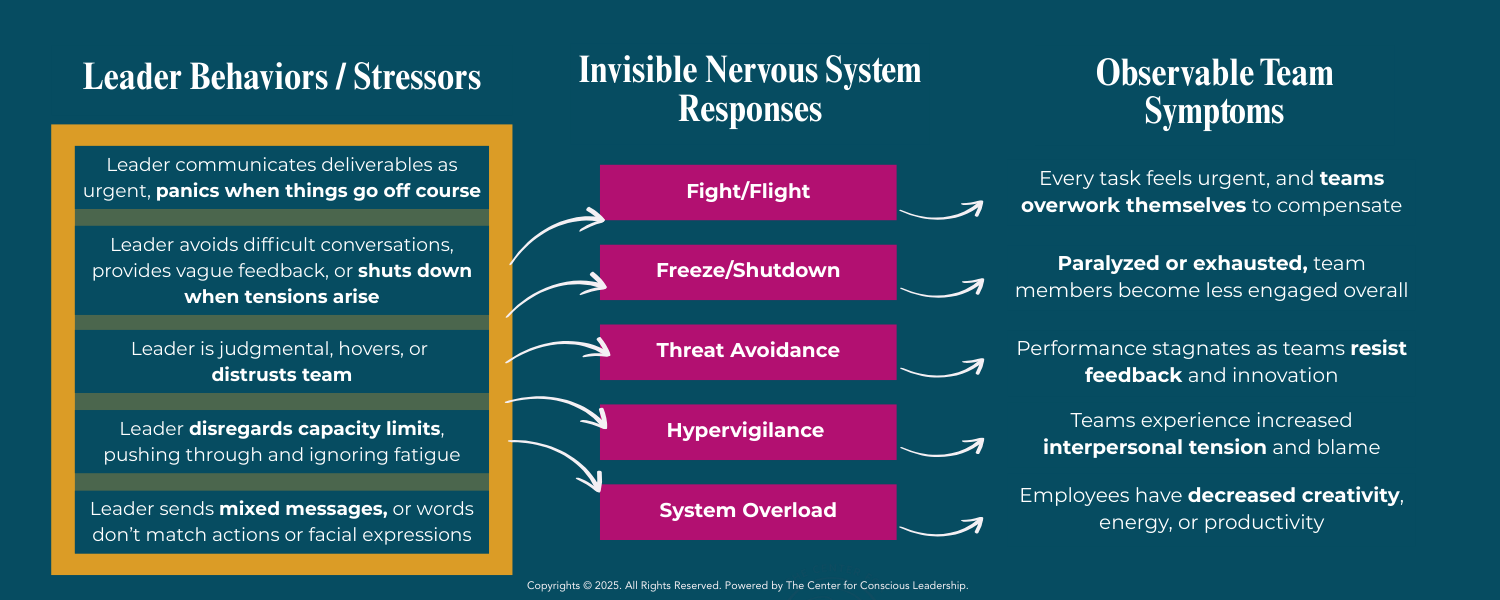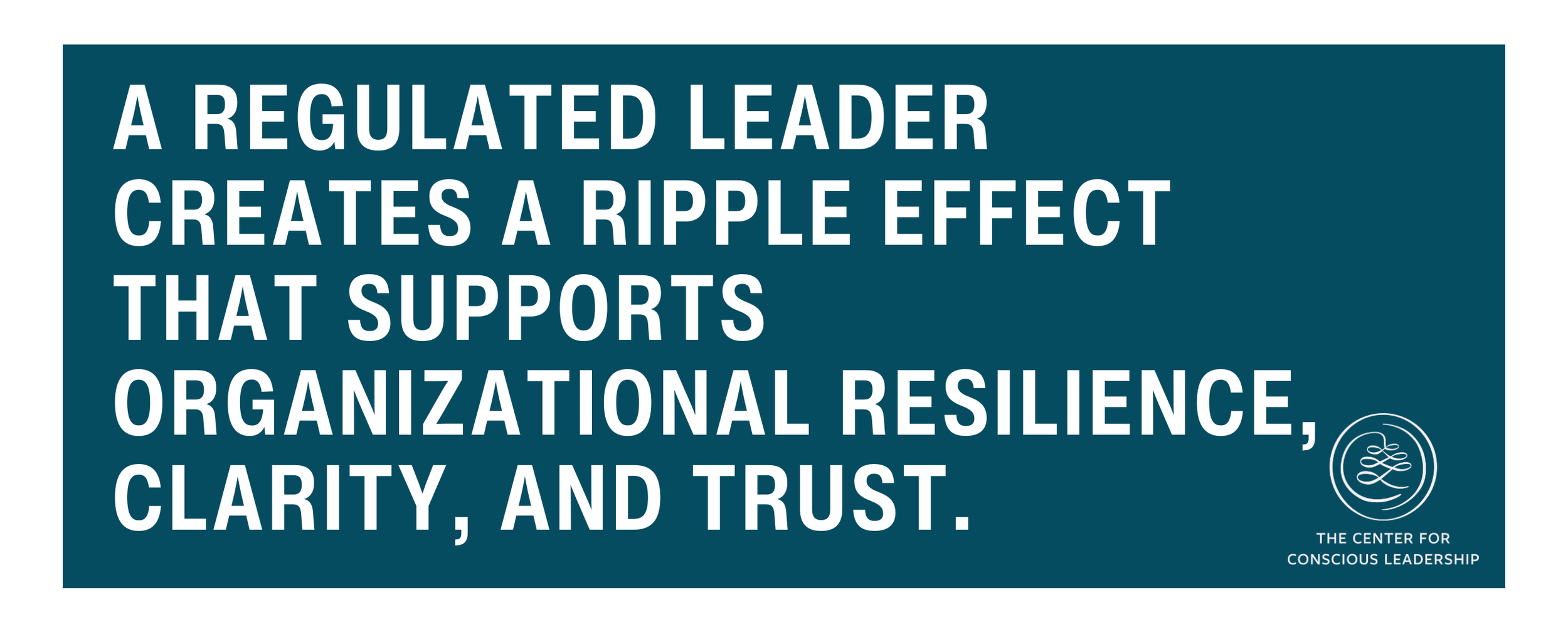What Is Co-Regulation—and Why High-Performing Teams Depend on It
You already know that your leadership presence sets the tone for your team.
What you may not realize is how much that presence shapes performance at a biological level.
Effective, steady, calm leadership isn’t just helpful–it’s the foundation for collaborative, confident, and connected teams.
What is Co-Regulation?
Co-regulation is a neurobiological process in which humans—especially in high-stakes environments—unconsciously take cues from each other’s emotional and physiological states.
In short: your team is constantly attuning to you, whether you mean for them to or not. When leaders remain calm, present, and clear, they send signals of safety that help regulate the nervous systems of those around them.
This is co-regulation, and it is one of the most underleveraged performance tools in the modern workplace.
Why It Matters to Business
Our nervous systems are designed to keep us safe, and they don’t just go away when they’re inconvenient.
While we intellectually understand that we aren’t in any physical danger under a time crunch, our nervous systems still respond to the heightened experience. Our systems do not differentiate between an active physical threat and a psychological or emotional one–if we’re activated and stressed, the nervous system sounds the same internal alarm. A perceived threat to life and wellbeing is a perceived threat all the same.
This is why it is crucial for leaders to be informed on co-regulation, and stay proactive, regulated, and calm in times of increased stress.
Here’s what happens when teams are working with dysregulated leaders—or under constant pressure:
Even if your strategies are well intentioned, a dysregulated team can’t execute at full capacity. They are spending cognitive and emotional energy on staying safe, not driving outcomes.
So what can leaders do?
The Leadership Opportunity
Leaders drive results by how they show up—not just what they say.
When you as a leader remain grounded and consistent—even during market pressure, team change, or conflict—you provide the nervous system equivalent of a stabilizing force.
You become the anchor.
Take, for example, a team under pressure to perform. A collaborative, high-achieving group slowly starts to come apart at the seams as the deadline looms. A dysregulated leader, feeling the stress of the impending deadline herself, might push their team harder, emphasizing the importance of their success, focusing on the high-stakes nature of the project, emphasizing the consequences should something go wrong, worsening the problem. The team becomes increasingly burnt out, stressed, and frustrated, not because they lack skill, drive, or commitment, but because their nervous systems are overwhelmed. Instead of fueling high performance, stress floods their bodies, overwhelms their capacities, and leaves them reactive, disconnected, and unable to deliver their best work.
A conscious leader notices what their team is going through, and presses pause. They take the time to co-regulate with their team and re-establish their priorities and values. This could look like any number of things, from having a meeting to brainstorm more sources of support to adjusting a project’s timeline to jumping in and taking on part of the workload.
It’s not the specific approach that matters so much as the principle–intervening when you know your team needs support so that it doesn’t spiral out of control.
Effective, conscious co-regulation translates directly into:
Faster decision-making
Higher accountability
More agile and connected teams
Greater retention and morale
Increased innovation capacity
This is not a “soft” skill. This is leadership hygiene. Co-regulation is how leaders create the conditions for high performance without burning out their people.
The Conscious Leadership Advantage
Co-regulation is the understanding that when we feel better, we lead better, and when we lead better, our teams perform better.
At The Center for Conscious Leadership, we work with executives and senior leaders to shift from reactive management to regulated leadership—so they can hold complexity, drive strategic execution, and build cultures that thrive under pressure.
Your nervous system sets the pace. Your presence sets the tone. Your leadership habits shape the culture.
Let’s make sure they’re working for you—not against you.
Want to lead in a way that fuels high performance without causing high pressure?
Let’s talk about how conscious coaching can help you build a leadership presence that multiplies—not drains—team effectiveness.




